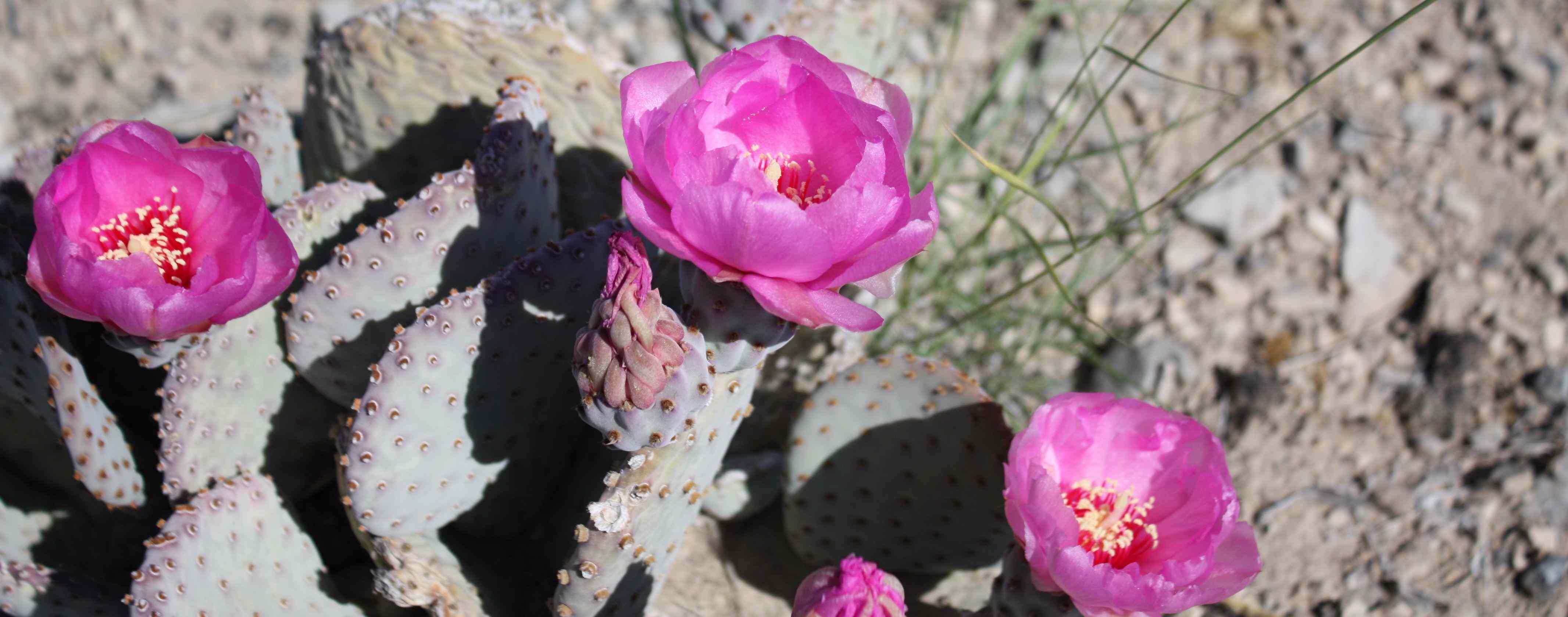
*Peer
reviewed
∞ Undergraduate co-author
Published 2013:∞ Undergraduate co-author
- *Yoder,
J. B., C. I. Smith, D. J. Rowley∞,
R. Flatz, W. K. Godsoe, C. Drummond, and O. Pellmyr. In
Review. Effects of gene flow on phenotype matching between
two varieties of Joshua tree (Yucca brevifolia: Agavaceae) and their
pollinators. Journal of Evolutionary
Biology. 26 (6):
1220-1233. pdf
- *Starr∞, T., K. Gadek∞, J. B. Yoder, R. Flatz, and C.
I. Smith. In Press. Asymmetric hybridization and gene flow
between Joshua trees (Agavaceae: Yucca) reflects differences
in pollinator host specificity. Molecular Ecology. 62
(3): 898-906. pdf
- Smith, C. I. In Press. Relentless Evolution by John N
Thompson, reviewed by Christopher Irwin Smith. Reports
of the National Center for Science Education.
- *Althoff,
D.M.,
K. A. Segraves, C. I. Smith, J. Leebens-Mack, O. Pellmyr. In
Press.Geographic isolation trumps coevolution as a driver of
yucca and yucca moth diversification. Molecular Phylogenetics and Evolution. 62
(3): 898-906. pdf
Published 2011:
- *Flatz, R., J. B. Yoder, E. L. Barnes∞, and C. I. Smith. 2011. Characterization of microsatellite loci in Yucca brevifolia (Agavaceae) and cross-amplification in related species. American Journal of Botany. 98 (3): e67-69. pdf
- *Smith, C. I., S. Tank∞, W. Godsoe, J. Levenick, E. Strand, T. Esque, and O. Pellmyr. 2011. Plants and herbivorous insects are evolutionary communities: Concerted range changes in Joshua trees and four yucca moths. PLOS - One. 6(10): e25628. link to full text
Published 2010
- *Godsoe, W. J. B. Yoder, C. I. Smith, C. S. Drummond,
and O. Pellmyr. 2010. Absence of population-level phenotype
matching in an obligate pollination mutualism. Journal of
Evolutionary Biology. 23 (12): 2739–2746. pdf
- *Yoder, J. B., C. I. Smith, and O. Pellmyr. 2010. How
to become a yucca moth: Minimal trait evolution needed to
establish the obligate pollination mutualism. Biological
Journal of the Linnean Society. 100 (4): 847-855. pdf
- *Smith, C. I. 2010. Coevolution of Joshua trees and
their Pollinators: A Short Review. Mojave
National Preserve Science Newsletter. 2010 (1):
4-8. pdf
Published 2009
- *Smith, C. I., J. B. Yoder, W. K. Godsoe, and O.
Pellmyr. 2009. Host specificity and reproductive success of
yucca moths (Tegeticula spp. Lepidoptera: Prodoxidae) mirror
patterns of gene flow between host plant varieties of Joshua
tree (Yucca brevifolia:
Agavaceae). Molecular Ecology. 18 (24): 5218-5229.
Selected for the cover. pdf
- * Godsoe, W, E. Strand, C. I. Smith, J. B. Yoder, T. C.
Esque, and O. Pellmyr. 2009. Divergence in an obligate
mutualism is not explained by divergent climate factors. New
Phytologist. 183: 589-599. pdf
- *Drummond, C., C. I. Smith, and O. Pellmyr. 2009. Species identification and sibship assignment of sympatric larvae in the yucca moths Tegeticula synthetica and T. antithetica (Lepidoptera: Prodoxidae). Molecular Ecology Resources. 9 (5): 1369-1372. pdf
Published 2008
- *Smith, C.I, W.K.W. Godsoe, S. Tank∞, J.B.Yoder, and O.
Pellmyr. 2008. Distinguishing coevolution from covicariance
in an obligate pollination mutualism: Asynchronous
divergence in Joshua tree and its pollinators. Evolution.
62 (10): 2676-2687. Selected for the Cover. pdf
- *Godsoe, W., J. B. Yoder, C. I. Smith, O. Pellmyr.
2008. Coevolution and diversification in the Joshua tree
yucca moth mutualism. American Naturalist. 171 (6)
816-823. pdf
- *Smith, C. I., O. Pellmyr, D. M. Althoff, M.
Balcazar-Lara, J. Leebens-Mack, K. A. Segraves. 2008.
Pattern and timing of diversification in Yucca (Agavaceae):
Specialized pollination does not escalate rates of
diversification. Proceedings of the Royal Society of
London Series B: Biological Sciences. 275: 249-258.
pdf
Published 2007
- Smith, C I. 2007. Historical biogeography: The new synthesis. Current Biology.17: R598-R600.pdf
- *Gomulkiewicz, R., D. M. Drown, M. F. Dybdahl, W.
Godsoe, S. L. Nuismer, K. M. Pepin, B. J. Ridenhour, C. I.
Smith, and J. B. Yoder. 2007. Do’s and Don’ts of testing the
geographic mosaic theory of coevolution. Heredity.
98: 249–258. pdf
Published 2006
- *Smith, C. I. and B. D. Farrell. 2006. Evolutionary
consequences of dispersal ability in cactus-feeding insects.
Genetica.
126: 323-334. pdf
Published 2005
- *Smith, C. I. and B. D. Farrell. 2005. Recent range
expansions in the flightless longhorn cactus beetles Moneilema gigas and M. armatum in response
to Pleistocene climate changes. Molecular Ecology. 14:
1025-1044. pdf
- *Smith, C. I. and B. D. Farrell. 2005 Phylogeography of
the longhorn cactus beetle Moneilema appressum LeConte (Coleoptera:
Cerambycidae) Was the differentiation of the Madrean
sky-islands driven by Pleistocene climate changes? Molecular
Ecology. 14: 3049-3065. pdf
- Smith, C. I. 2005. Re-wilding: introductions
could reduce biodiversity. Nature. 437 (7057): 318. pdf
- *Smith, C. I. and B. D. Farrell. 2005. Historical
biogeography of the longhorn cactus beetles: The influence
of Pleistocene climate changes on American desert
communities. Pp 135- 139 in Biodiversity
and
Management
of
the
Madrean
Archipelago
II:
Connecting Mountain Islands and Desert Seas. G.
Gottfried et al. Editors. 2004 May 11-15; Tucson, AZ.
Proceedings RMRS-P-36. Fort Collins, CO: U.S. Department of
Agriculture, Forest Service, Rocky Mountain Research
Station. pdf
Published prior to 2000:
- *Miller, R.M., C. I. Smith, J. Jastrow, and J. D.
Bever. 1999. The mycorrhizal status of the genus Carex (Cyperaceae). American
Journal of Botany. 86: (4) 547-553. pdf
- *Yun, W., S. T. Pratt, R.
M. Miller, Z. Cai, D. B. Hunter, A. G. Jastfer, K. M.
Kemner, B. Lai, H.-R. Lee., D. G. Leegnini, W. Rodrigues,
and C. I. Smith. 1999. X-ray imaging and microspectroscopy
of plants and fungi. Journal of Synchrotron Radiation.
5: 1390-1395.